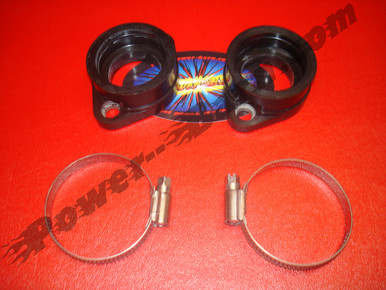Second oiler installed, but still no gaskets and no plan for how to locate the rocker spindles yet.
Primary chain mocked up. I used a RK MXV 428 chain. It's not a Renolds, I know, but I've always been happy with RK's longevity in the past, though I admit I've never used one in a primary chain application. Will it handle 50+ hp? They do have a pretty high tensile strength rating.
The observant might also notice a 23 tooth crank sprocket. I did this because of the theory that the faster you can spin the transmission (within bounds of reason) the more teeth you can spread the load across. Because I am using a non-standard rear wheel, I have a lot of options for the final drive ratio, and will compensate for the 23 tooth drive sprocket in the final drive. That's my plan anyway.
I had the NEB clutch installed, but when I tried to install the drive chain the first time, I discovered that the clutch basket was so close to the inner primary cover that there was no way the drive chain would fit. Closer inspection showed that the clutch sprocket was 0.175" out of line. Removed the clutch and made up a 0.175" thick spacer to fit behind it. Now the sprockets line up, but how I have this problem:
There aren't enough threads on the shaft. Does anybody know if I can remove the steel plate, (which appears to be pretty thick) and run without it? Just experimentally, I tried to unscrew those allen headed screws but only succeeded in twisting an allen wrench!! Those suckers are tight. I guess I may have to try heat, see if maybe there is some kind of loctite in there that I can break lose.

